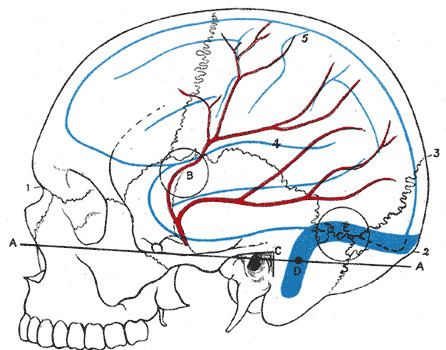Dorlands/Elsevier l_10/12494723 | ||
 | ||
Reid's base line is used for an unambiguous definition of the orientation of the human skull in conventional radiography, computer tomography (CT), and magnetic resonance imaging (MRI) studies. It is defined as a line drawn from the inferior margin of the orbit (Orbitale point) to the auricular point (center of the orifice of the external acoustic meatus, Auriculare point) and extending backward to the center of the occipital bone. Used as the zero plane in computed tomography.
In 1962, the World Federation of Radiology defined it as the line between the infraorbital margin and the upper margin of the external auditory meatus.
With the head upright, it is typically tilted about 7 degrees nose up with respect to the horizontal plane.
References
Reid's base line Wikipedia(Text) CC BY-SA
